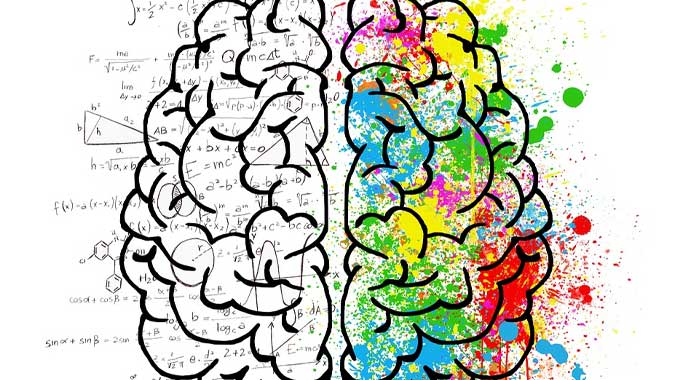For people living with posttraumatic stress disorder (PTSD), life can feel exhausting and isolating. Transcranial magnetic stimulation, an innovative and painless brain stimulation therapy, can be a lifeline for TMS patients, improving symptoms and helping them return to a fulfilling and productive life.
- What Is Transcranial Magnetic Stimulation Tms Therapy
- What Is Repetitive Tms
- What Is Deep Transcranial Magnetic Stimulation
- What Is Post Traumatic Stress Disorder Ptsd
- What Are Common Ptsd Symptoms
- Re Experiencing Symptoms
- Avoidance Symptoms
- Arousal And Reactivity Symptoms
- Cognitive And Mood Symptoms
- How Does Transcranial Magnetic Stimulation Tms Therapy Treat Post Traumatic Stress Disorder
- How Does Transcranial Magnetic Stimulation Therapy Affect The Brain Of A Tms Patient
- How Successful Is Tms For Ptsd
- Theta Burst Stimulation Tms For Ptsd
- What Other Conditions Does Tms Therapy Treat
- Pioneering Tms Therapy At GIA Chicago
What Is Transcranial Magnetic Stimulation (TMS) Therapy?
Transcranial magnetic stimulation (TMS) therapy is an innovative brain stimulation treatment that uses gentle magnetic waves to affect brain activity in certain regions of nerve cells, leading to significant changes in mood and behavior. FDA-cleared for treatment-resistant major depressive disorder in 2008, TMS is a safe, non-invasive procedure with few side effects. Research has shown TMS to effectively treat a range of mental health conditions including obsessive-compulsive disorder and anxiety symptoms.
What Is Repetitive TMS?
Repetitive transcranial magnetic stimulation (rTMS) is a type of transcranial magnetic stimulation therapy that uses trains of multiple (repetitive) magnetic pulses, rather than a single pulse. rTMS aims to produce lasting changes in brain activity that persist beyond the end of a session or course of treatment. Because most therapeutic uses of TMS involve rTMS therapy, the two terms are often used interchangeably.
What Is Deep Transcranial Magnetic Stimulation?
Deep transcranial magnetic stimulation (deep TMS) is a type of TMS that uses specialized H-coils to reach deeper and broader areas of the brain, without having to increase the intensity of the pulse. Deep TMS supports the treatment of a wider range of mental health conditions involving different regions of nerve cells, expanding the scope of the therapy.

What Is Post-Traumatic Stress Disorder (PTSD)?
Post-traumatic stress disorder (PTSD) is a mental health disorder that develops after someone has experienced a scary, dangerous, or shocking event.
While almost everyone experiences some symptoms of distress immediately after a traumatic event, these symptoms usually disappear after around a month. Post-traumatic stress disorder happens when these symptoms continue to manifest for a longer period, significantly affecting the individual’s daily life.
What Are Common PTSD Symptoms?
PTSD symptoms fall into four main categories: re-experiencing symptoms, avoidance symptoms, arousal and reactivity symptoms, and cognitive and mood symptoms. To receive a PTSD diagnosis, PTSD patients must experience:
- At least one re-experiencing symptom
- At least one avoidance symptom
- At least two arousal and reactivity PTSD symptoms
- At least two cognition and mood PTSD symptoms
Re-Experiencing Symptoms
Re-experiencing symptoms include:
- flashbacks of the traumatic event
- physical sensations, such as pain, shaking, or sweating
- bad dreams
- frightening thoughts
Re-experiencing symptoms may develop from a person’s internal thoughts and feelings or be triggered by external stimuli, such as words, objects, or situations that remind the person of the traumatic event.
Avoidance Symptoms:
Avoidance symptoms are behaviors that the person engages in to avoid reminders of the traumatic event. This may include staying away from certain objects or places or avoiding certain thoughts and feelings.
Arousal and Reactivity Symptoms
Arousal and reactivity symptoms may involve feeling on edge, being easily startled, having difficulty sleeping, or getting angry easily. These symptoms are usually fairly constant and can make everyday life stressful and tiring.
Cognitive and Mood Symptoms
Cognitive and mood symptoms usually resemble symptoms of depression, such as:
- inability to enjoy things
- low self-esteem
- feelings of guilt or shame
- negative feelings about the world
- unhealthy coping mechanisms, such as drug or alcohol abuse
- emotional numbness
People may also have trouble remembering the traumatic event. Cognitive and mood symptoms are often isolating, causing the person to feel distant from friends, family members, and other loved ones.

How Does Transcranial Magnetic Stimulation (TMS) Therapy Treat Post Traumatic Stress Disorder?
PTSD symptoms can be isolating and overwhelming, seriously preventing an individual from enjoying life, being themselves, and pursuing their goals. Accessing effective treatment is vital to support individuals to recover from traumatic events and live fulfilling and joyful lives.
Certain types of therapy can effectively support some people in recovering from post-traumatic stress disorder. These include cognitive processing therapy, exposure therapy, and eye movement desensitization and reprocessing (EMDR) therapy. Some people also find that anti-depressants help them to manage cognitive and mood symptoms.
However, talk therapy doesn’t work for everyone, leaving some PTSD patients in need of further options. Transcranial magnetic stimulation (TMS) therapy can offer a lifeline for these clients, effectively reducing PTSD symptoms and helping individuals reclaim their futures.
How Does Transcranial Magnetic Stimulation Therapy Affect the Brain of a TMS Patient?
Scientists have found that PTSD alters brain functions in three important pathways: the default mode network, executive control network, and salience network. The executive control network involves the dorsolateral prefrontal cortex and lateral posterior parietal regions of the brain, while the salience network involves the anterior cingulate cortex, anterior insula, and amygdala regions.
TMS works by passing an electric current through a magnetic coil placed over the client’s head. This generates a magnetic field that passes seamlessly through the client’s scalp and reaches these target brain regions. The magnetic field induces a tiny electric current in the nerve cells, stimulating their activity, affecting brain functions, and improving symptoms of PTSD.
How Successful Is TMS for PTSD?
Extensive clinical research and randomized controlled trials have shown that transcranial magnetic stimulation is effective for clients with post-traumatic stress disorder.
A meta-analysis of the treatment found that a course of transcranial magnetic stimulation therapy decreased levels of active distress and insomnia in clients. A second study found TMS treatments led to a significant reduction of PTSD symptoms after traumatic events.
A 2010 study in the Journal of Clinical Psychiatry found that high-frequency stimulation of both the left and right dorsolateral prefrontal cortex (DLPFC) effectively reduced PTSD symptoms, but rTMS on the right DLPFC produced a larger effect. Right DLPFC stimulation also led to a significant reduction in anxiety. The study found that improvements in post-traumatic stress disorder symptoms were long-lasting, with significant enduring effects at the 3-month follow-up.
Theta-Burst Stimulation TMS for PTSD
Theta-burst stimulation (TBS) is a newer form of TMS that uses triplet bursts of magnetic pulses (“theta bursts:). TBS involves much shorter TMS treatment sessions than standard rTMS but is just as, if not more, effective.
A 2019 study found that after one-month right-sided TBS treatment, clients showed improvements in social and occupational functioning and PTSD symptoms, including depressive symptoms. Theta-burst stimulation TMS for PTSD is an exciting development that could reduce treatment time and increase accessibility for PTSD patients across the country.
What Other Conditions Does TMS Therapy Treat?
TMS therapy is FDA-approved for treatment-resistant major depressive disorder, anxiety symptoms in major depression, and obsessive-compulsive disorder. Studies have shown it may also improve symptoms in many other conditions, including PTSD, addiction, Alzheimer’s disease, chronic pain, stroke recovery, and schizophrenia.

Pioneering TMS Therapy At GIA Chicago
GIA Chicago is a state-of-the-art mental wellness treatment center that specializes in TMS therapy. Our pioneering team includes some of the nation’s leading TMS experts, ready to apply their unequaled knowledge to your recovery journey.
At GIA, we compassionately apply the latest scientific advances to mental wellness treatment, supporting people across the country to access the treatment options available. Our state-of-the-art facilities are equipped with modern and specialized equipment to support our innovative approaches while providing an open and comfortable space for clients to engage in treatment.
We understand that many of our clients have busy schedules. We ensure that our outpatient procedures are easily accessible, designing treatment plans to fit your needs. Our treatment packages are individualized and personal from beginning to end, helping each client return to the best version of themselves.
If you are considering TMS for PTSD, major depressive disorder, or another mental health concern, contact us today to open the door to a life-changing experience.





